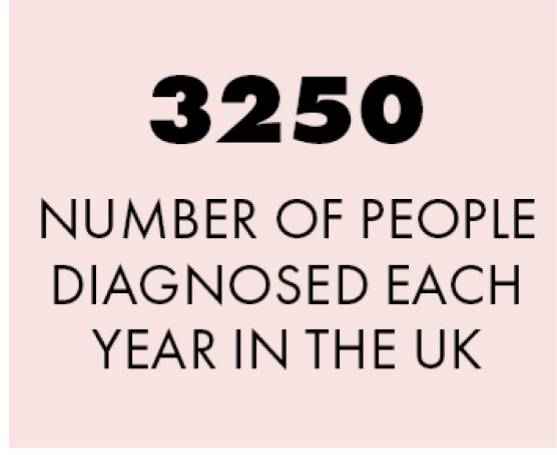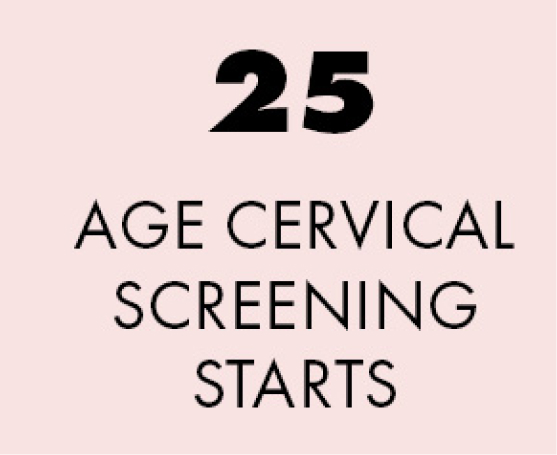June 2025 5 MIN READ
Let’s Talk about Cervical Screening
Going for your cervical screening isn’t always easy, and everyone’s experience is different. But, there are things you can do to make the appointment more comfortable. During Cervical Screening Awareness Week, we are supporting The Eve Appeal to help raise awareness of cervical screening and share tips to help make your screening a comfortable experience.
Your Cervical Screening Test
Cervical screening (which used to be called a smear test) is a free health test on the NHS that helps prevent cervical cancer. It checks for a virus called high-risk human papillomavirus (HPV), which causes nearly all cervical cancers. If you have high-risk HPV your sample will be checked for any cell changes. These changes are not cancer but may develop into cancer in the future if they are not monitored or treated. Cervical screening is not a test to diagnose cervical cancer, but to help prevent it.
Cervical screening starts at the age of 25 in the UK. You will get an invitation letter near your 25th birthday for a cervical screening test. You can then contact your GP surgery to book your appointment.
You will be sent an invite for screening every three to five years until the age of 64 (depending on your age and where you live in the UK). If you are 65 or over and have not had a screening test since you were 50; you will also receive an invitation. If you have high-risk HPV or any cervical cell changes you will be checked more often.
If you are trans and registered as male with your GP surgery you may not get an invite in the post. If you have a cervix you are still at risk of cervical cancer. You can book your screening and opt in to future invites by calling your GP surgery.
What Happens At A Cervical Screening
When you go for your cervical screening test, the doctor or nurse will take a sample of cells from your cervix.
Your nurse will give you a private space to undress from the waist down, usually behind a curtain. If you are wearing a dress or skirt, you can leave this on and just take off your underwear. You will be given a sheet to cover yourself with.
You will be asked to lie on the bed and make yourself comfortable.
You will then be asked to get in a position with your knees raised and the soles of your feet together. If you can’t do this, you may be able to lie on your side (which is called the left lateral position).
The doctor or nurse will then insert a lubricated speculum into the vagina, so that they can open it to see your cervix. They will sweep the cervix with a soft plastic brush. The sample will be sent off for testing. And that’s it! The nurse will take the speculum out and give you a private space to dress again. They will explain how and when you should get your results.
The test only takes a few minutes. Find out more about cervical screening on The Eve Appeal’s website
What Happens At A Cervical Screening
We know that cervical screening isn’t always easy, but there are some things you can do to help make yourself more comfortable. Cervical screenings are estimated to save 5000 lives a year in the UK, so we’re here to remind you that you always have the power to ask for what you want. Whether it’s playing music, bringing a friend, or changing position. After all, cervical screening saves lives.
Here are some of our top tips:
Talk to your nurse or doctor
If it is your first cervical screening, you feel embarrassed or worried, you have had a bad experience before, or you have experienced anything that makes the test hard for you, telling the person doing the test means they can try to give you the right support. If you don’t feel comfortable saying something, try writing it down.
Ask for the first appointment of the day
If you feel uncomfortable in waiting rooms, you may want to ask to book the first appointment of the day. This can mean it is quieter and there is less time for you to wait.
Ask to book a longer or double appointment or ask for a female doctor or nurse
Ask for a female doctor or nurse if you prefer, or a double appointment if you think it will give you more time and comfort to open up.
Locked or not
You can ask the nurse or doctor to lock the door, if it makes you feel safer.
Bring a friend
You can ask to bring a friend, family member or carer for extra support at your cervical screening. If a trusted person isn’t able to come to the appointment, you can check if another member of staff can be with you for support. This person is sometimes called a chaperone.
Change position
You can ask your nurse if you can switch positions to something more comfortable. This may not be possible, as it depends what positions they are trained in, but you can always ask.
Ask for a smaller speculum
Speculums come in different sizes, you can ask for a smaller speculum which may be more comfortable for you.
Guide it in yourself
You can ask if you can help guide the speculum in yourself, if this would help you feel more comfortable and in control.
More lube
Whether you want to bring your own or ask your nurse to use more – water-based lube can help make the screening more comfortable.
Listen to music or a podcast
Some people make playlists or listen to their favourite audiobook or podcasts to help them relax.
Ask to stop or for a break
You can always say stop whenever you need to, for whatever reason you need to.
Read a book
You can read a book if it may help you feel more relaxed, give it a go!
Wear a skirt or dress
If you feel comfortable wearing a skirt or dress, it may help you feel more covered. You can keep it on during the test and only take off your underwear.
More Support
The Survivors Trust and The Eve Appeal are collaborating as part of the #CheckWithMeFirst campaign to help raise awareness of the challenges survivors of rape, sexual abuse and sexual violence may face when accessing cervical screening. Many survivors of sexual assault or sexual abuse find healthcare appointments distressing, particularly appointments which may involve physical examinations such as cervical screening. You can download The Eve Appeal’s guide for information and tips to help make your appointment easier here.
Cervical screening isn't easy for everyone. If you are worried about the test or know you find it hard, The Eve Appeal are able to support you with questions or by talking things through on their Ask Eve helpline- EveAppeal.org.uk/AskEve.




































